Decarbonising small businesses: too much demand and not enough supply
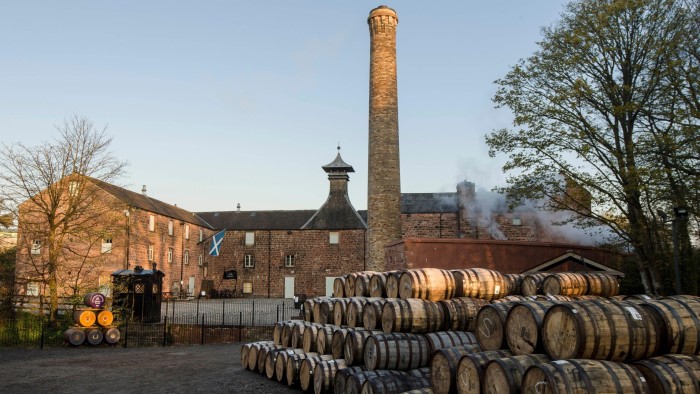
Simply sign up to the Utilities myFT Digest -- delivered directly to your inbox.
Eight miles from the English border in the riverside town of Annan, one of Scotland’s oldest whisky makers is embracing a new decarbonisation technology.
After receiving £3.6mn in funding from the UK government in June, the nearly 200-year-old Annandale Distillery will soon be relying on low carbon heating for the distillation process — a change from traditional steam boilers heated by coal, oil, or other fuels.
It will do so by partnering with Exergy3, the start-up behind a groundbreaking technology that converts excess renewable energy from the National Grid into zero-carbon heat.
Exergy3’s thermal storage systems charge at times when electricity being produced by the grid is derived from renewable sources, such as wind and solar power, explains co-founder and chief executive Markus Rondé. Then, that low-carbon energy is converted into heat of up to 1200°C and stored with minimal energy losses.
This process came about through 10 years of research at The University of Edinburgh, and the business was spun out in May, supported by the University’s commercialisation service: Edinburgh Innovations. It was granted £3.6mn in funding from the UK’s Industrial Fuel Switching Competition the following month.
“Our technology is very flexible,” says Rondé, who notes that it can be used to power a variety of sites from large cement and steel plants to smaller factories.
“From the outside, the storage system looks like a standard shipping container,” he says. “However, the inside is a complex architecture that enables us to store large quantities of heat.”
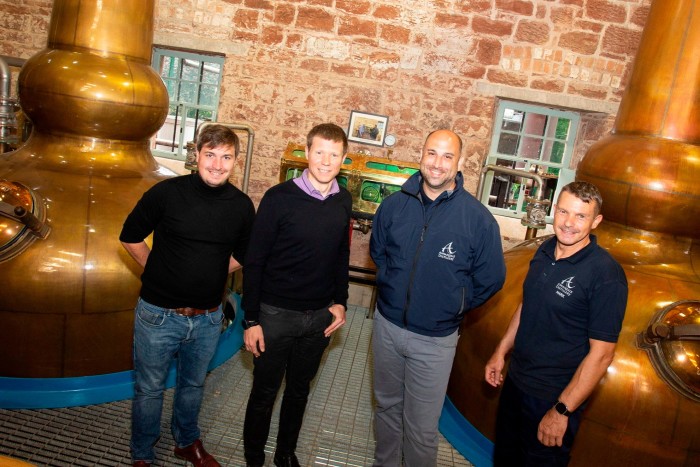
Annandale is typical of many small- to medium-sized enterprises (SMEs) looking to reduce their dependency on the grid. Although they represent the majority of businesses within the national economy, the International Energy Agency points out that they can be the most exposed to energy price rises, as they often lack the resources to decarbonise their operations and cut running costs.
They are also crucial to hitting climate targets. IEA analysis shows that, in order to limit the average rise in temperatures over the long term to 1.5C — as set out in the Paris climate accord — the world must double its annual rate of progress on energy efficiency between now and 2030.
For SMEs, and larger groups, “adaptation will be a vital strategy as we move forward,” says Paul Wrighton, director of sustainable infrastructure for the UK and Ireland at equipment supplier Johnson Controls. “Studies show that 80 per cent of the buildings that will be standing in London in 2050 are already in existence, meaning retrofitting on existing infrastructure will be critical.’’
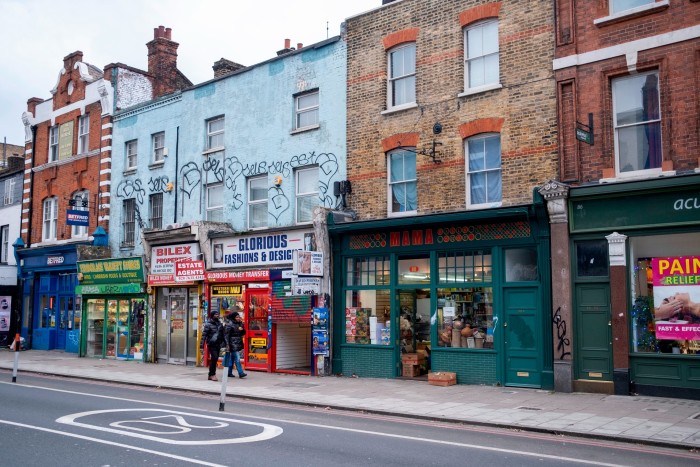
Artificial intelligence, he believes, could help in developing “smart” buildings that can optimise temperature, lighting and other functions in real time.
The technologies needed to make buildings energy efficient, such as solar power, heat pumps and energy management systems, already exist, with local and national governments making greater efforts to implement them.
A recent assessment by the C40, a global network of city mayors pushing for environmental action, showed that more than 80 per cent of existing buildings in signatory cities have either completed or are on track to meet their goals of operating at net zero carbon by 2050.
In the EU, 88 per cent of organisations said they had invested in at least one climate mitigation tactic, according to the European Investment Bank, while the European Innovation Council, which invests in “Green Deal” start-ups along other early-stage tech companies, has allocated 70 per cent of its budget to SMEs.
Similarly, in the UK, London mayor Sadiq Khan’s “Green New Deal” — which aims to double the size of London’s green economy to £100bn by 2030 — is seeking to promote a “retrofit revolution” to create low-carbon homes and businesses.
However, despite recent shows of political support, a global labour shortage remains a major challenge for SMEs looking to lessen their dependence on carbon.
“The supply chain is the toughest to address,” says Wrighton, as the increase in decarbonisation efforts creates a need for more steel, electrical components, and other materials.
To meet the UK’s net zero ambitions, infrastructure investor Macquarie and upskilling non-profit Generation UK estimate that 2mn people across all businesses big and small, will need to be trained in areas such as managing wind and solar power systems by 2030. This will undoubtedly impact SME organisations already struggling to mitigate climate targets.
Attracting workers to fill those roles is another challenge. A report by the Resolution Foundation think-tank last year found that the share of green jobs in the country has grown by just 1.3 per cent over the past decade, and that “significant change will be required over the next decade if the UK is to meet its emissions targets.”
Reskilling workers whose jobs require significant changes to align with net zero goals will require a joint effort from the government and the private sector, the report adds.
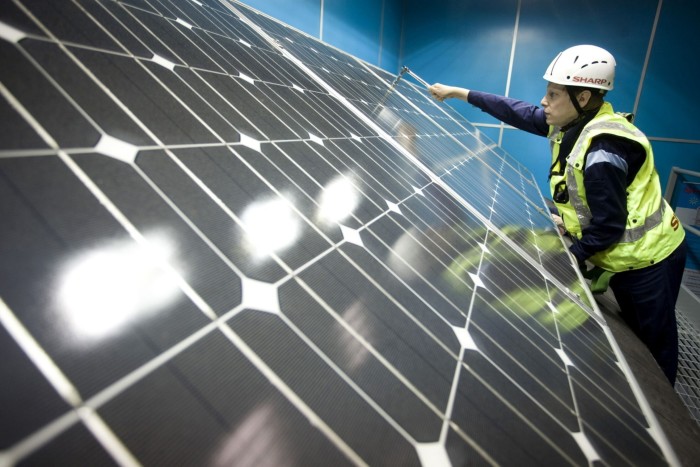
In the heat pump market, for example, the UK’s ambitious goal to install 600,000 of the devices by 2028 is under threat because of a crippling labour shortage. The number of heat-pump engineers will need to increase nine-fold, from the current 3,000 to 29,000, to meet that target, according to analysis by UK non-profit Nesta.
That would mean training more new installers each year than are currently working in the whole industry, Nesta notes — an unlikely scenario unless a wave of new entrants can be attracted to the industry.
With fewer cash reserves to fuel the transition, SMEs are therefore likely to need government support to overcome the supply shortages.
That may include help with the cost of training staff in energy efficiency — which can range from a few hundred pounds to £2,000 — to providing experienced gas engineers with enough finance to cross over into a less mature industry.
As demand continues to outgrow supply, tax breaks and other financial incentives will be needed to get SMEs on the zero-carbon train.
Rondé reckons it is the only way to ensure widescale adoption. “Governments will have to implement supporting policies for industrial decarbonisation as they did for renewable energy generation in the early days,” he says.
Climate Capital

Where climate change meets business, markets and politics. Explore the FT’s coverage here.
Are you curious about the FT’s environmental sustainability commitments? Find out more about our science-based targets here
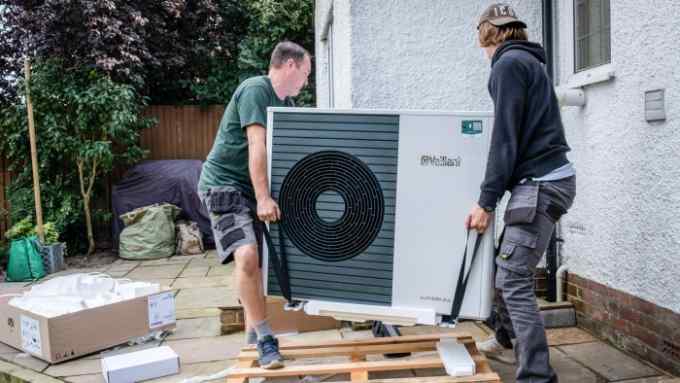
Comments